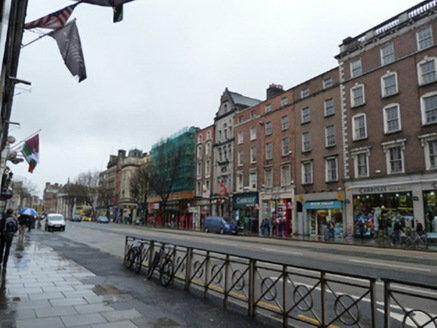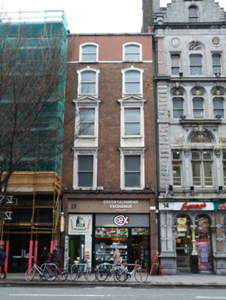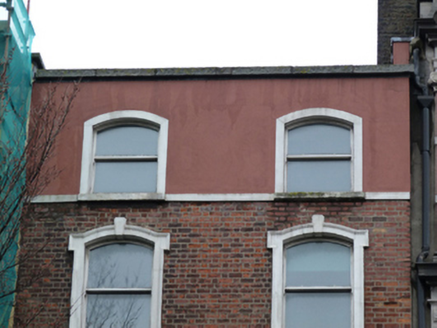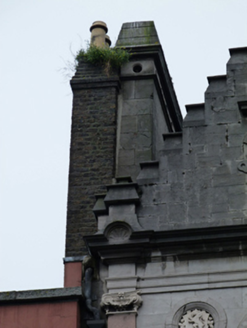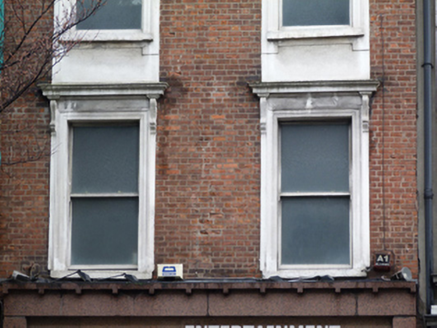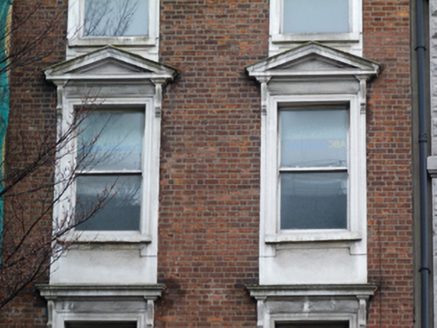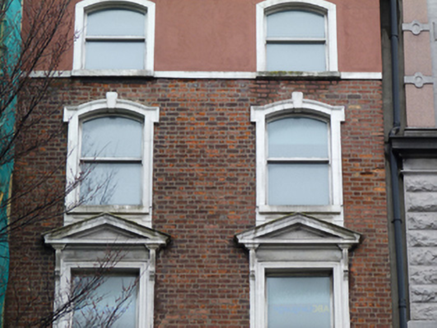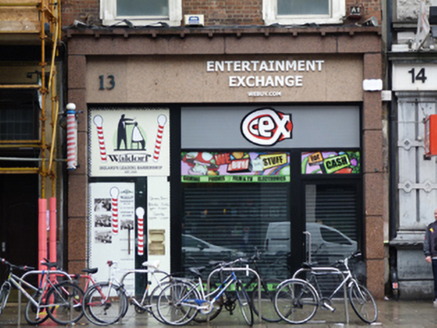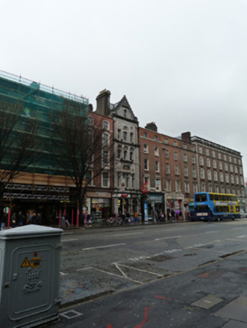Survey Data
Reg No
50020219
Rating
Regional
Categories of Special Interest
Architectural, Artistic, Historical, Social
Previous Name
T. P. Swan
Original Use
House
In Use As
Shop/retail outlet
Date
1790 - 1810
Coordinates
315968, 234273
Date Recorded
29/03/2015
Date Updated
--/--/--
Description
Attached two-bay five-storey former house and shop, built c.1800, renovated 1862, recent shopfront inserted to front (east) elevation. Now in use as retail outlet. M-profile pitched slate roof, hipped to south, hidden behind rendered parapet with granite coping, rendered and red brick chimneystacks having clay pots. Smooth rendered wall to fourth floor, render platband over brown brick walls, laid in Flemish bond. Square- and segmental-headed window openings with masonry sills and architraves, scrolled brackets supporting entablature to first floor window openings, scrolled brackets supporting pediments and aprons to second floor window openings, one-over-one pane timber sliding sash windows throughout. Recent polished stone-clad shopfront having recent fittings to ground floor.
Appraisal
Westmoreland Street, named after the tenth Earl of Westmoreland, was developed by the Wide Street Commissioners in the late eighteenth century as part of a network of streets connecting the newly built Carlisle Bridge (now O’Connell Bridge) and College Green. This building formed part of a unified terrace, designed by Henry Aaron Baker (1753-1836), of five-storey buildings formerly with stone shopfronts to the street. As new commercial and financial uses were introduced in the second half of the nineteenth century, many façades were remodelled. This building was ‘newly and expensively fitted up’ by J. C. Byrne for T. P. Swan, a house and land agent, in 1862. The stucco embellishments provide visual interest to the classically restrained façade, and place this façade within a mid-nineteenth-century context. The retention of timber sliding sash windows contribute to the patina of age.
